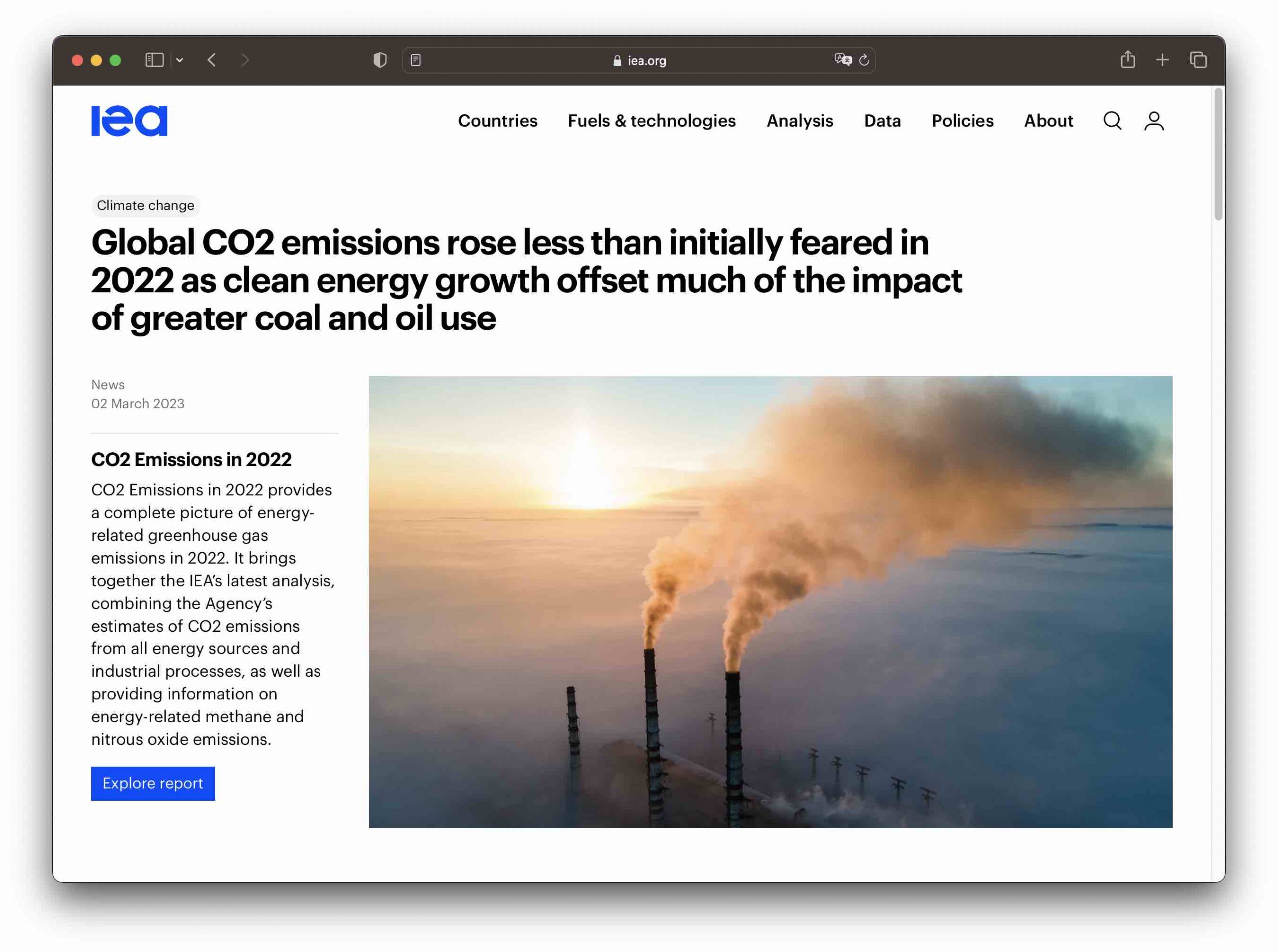To achieve climate and energy targets, increased measures are needed to switch to clean energies. It is true that the global energy crisis has not caused emissions to rise as feared. But energy producers continue to blow CO2 into the atmosphere at a high level.
The International Energy Agency (IEA) is calling for more speed in the energy transition as global carbon dioxide emissions from power generation remain at record levels. Global energy-related CO2 emissions rose 0.9 percent, or 321 million metric tons, in 2022, reaching a peak of more than 36.8 billion metric tons, the IEA said Thursday in Paris. To meet climate and energy targets, it said, increased action is needed to shift to clean energy. In 2021, the increase in CO2 emissions worldwide had still been six percent.
“The impact of the energy crisis has not led to the sharp increase in global emissions initially feared, thanks to the outstanding growth of renewables, electric vehicles, heat pumps and energy-efficient technologies,” IEA Director Fatih Birol said. Without clean energy, the increase in CO2 emissions would have been nearly three times higher. “However, we are still seeing an increase in emissions from fossil fuels, which is hampering efforts to meet global climate goals.”

Rising CO2 emissions
International and national fossil fuel companies were making record sales and needed to take their share of responsibility – in line with their promises to meet climate targets, the IEA chief urged. “It is critical that they review their strategies to ensure they are aligned with meaningful emissions reductions.”
CO2 emissions from coal reportedly rose 1.6 percent last year as the global energy crisis in Asia and, to a lesser extent, Europe triggered a switch from gas to coal. Natural gas emissions fell 1.6 percent, it said, as supplies tightened following Russia’s invasion of Ukraine and European companies and citizens scrambled to reduce their gas consumption.
According to the report, CO2 emissions from oil rose even more than those from coal, by 2.5 percent. However, they still remained below pre-pandemic levels. According to the IEA, about half of the year-on-year increase in oil emissions was attributable to air traffic, which continued to recover from the pandemic.
